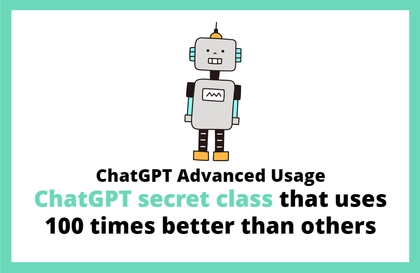
Advanced ChatGPT Usage - ChatGPT Secret Class to Use 100x Better Than Others
Masocampus
AI will not replace people. But 'you utilizing AI' will replace all who don't.
입문
ChatGPT, AI, prompt engineering
I want to classify pictures of pizza and spaghetti! This is a deep learning practical project course that follows the A to Z of a practical project to classify images using CNN, one of the deep learning algorithms.
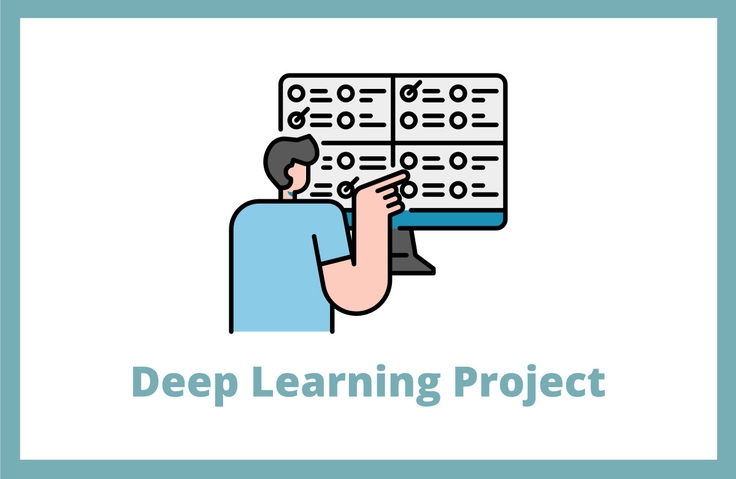
Understanding the Deep Learning Development Process
Understanding CNN components and model principles
Understanding OpenCV to improve the performance of CNN models
Deep learning utilization ability through CNN model practice
You mean it automatically classifies images?
Build your own deep learning CNN algorithm project!
Do you remember the Go match between AlphaGo and Lee Sedol ? It was an event that demonstrated to the world just how far artificial intelligence (AI) technology had advanced. Numerous media outlets rushed to cover AI-related articles. Machine learning and deep learning also garnered significant attention. The craze was immense in Korea at the time. Related books dominated bestseller lists, and everyone was rushing to academies to learn languages like Python and TensorFlow.
But as time passed, the enthusiasm gradually began to wane. Everyone said they were learning, but no one around me was actually learning deep learning. What could be the problem? It's probably because it's so difficult. No matter how simple the terms are, they're technical jargon, making them difficult to grasp.
So, we at Maso Campus will help you learn about CNN , one of the essential components of deep learning, and help you immerse yourself in deep learning by carrying out an image classification project .
This course covers the entire process, from the concept of CNNs to their practical implementation, so anyone can learn deep learning easily and effortlessly. We'll create an image classification project utilizing CNNs, an image recognition AI model that's a key core model in deep learning. We'll also use deep learning CNN algorithms to easily distinguish between various image files that are difficult to distinguish due to their similar appearance, such as dogs and cats.
If you want to easily distinguish between dogs and cats, pizza and spaghetti , try conquering CNN, a core deep learning algorithm!

Deep learning brings about overwhelming productivity improvements regardless of the field!
This is a process of completely understanding the concepts in order to “properly” utilize deep learning.
Recommended for these people ✅
You can acquire the following capabilities 👍
Through this lecture, you will understand the operating principles of the currently hottest deep learning CNN algorithm and be able to implement a deep learning model through practice.
Step 1. Understanding CNN Concepts and Operation Process
We'll delve into the principles of each, from data preparation using the lickr API, data preprocessing, data augmentation using OpenCV to improve accuracy, and even the NN model operation process, to discover what CNN is, a deep learning algorithm that excels at image classification!
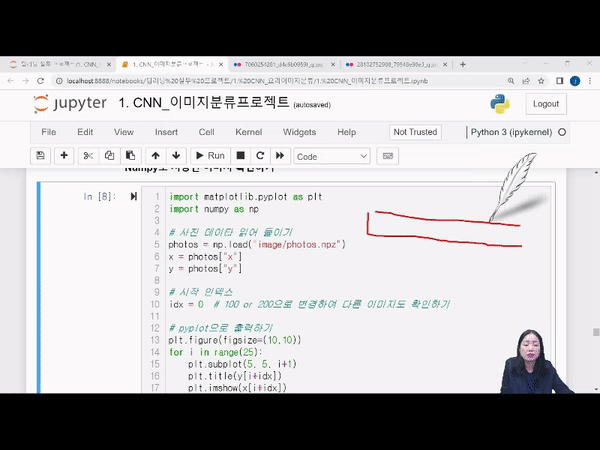 Converting image files to Numpy format
Converting image files to Numpy format Step 2. Practice the Deep Learning CNN Modeling Process
CNN, the representative deep learning image classification algorithm! Design your own CNN algorithm model, which can perform image classification with far greater sophistication and accuracy than DNN, and apply it immediately in real-world applications.
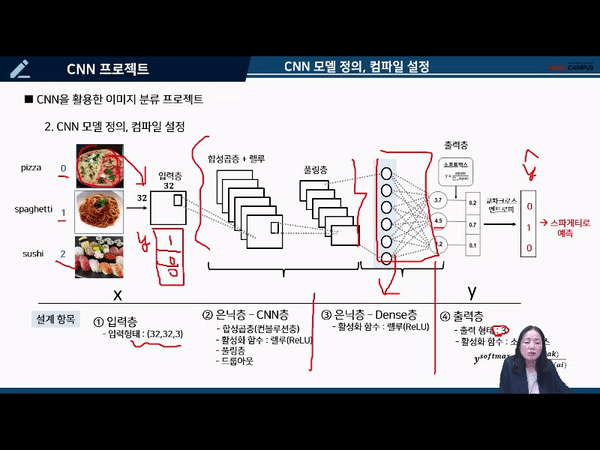 CNN model diagram
CNN model diagram Step 3. Use your CNN model anytime, anywhere with Flask and Ngrok.
Using Flask, a micro web framework, I can upload my own CNN model to a webpage by configuring a Flask server, and using Ngrok, a tunnel program that allows external access to the local network, I can access the webpage I created from anywhere, not just my computer.
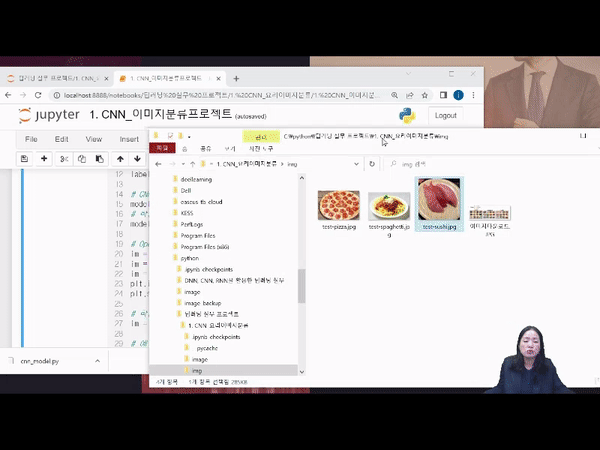 Predicting models with photos I took
Predicting models with photos I took Step 4. Transforming insights discovered in the digital world into reality
You can become a deep learning expert who can design and train a model using CNN, predict the content of images posted on websites, and discover various insights through this.
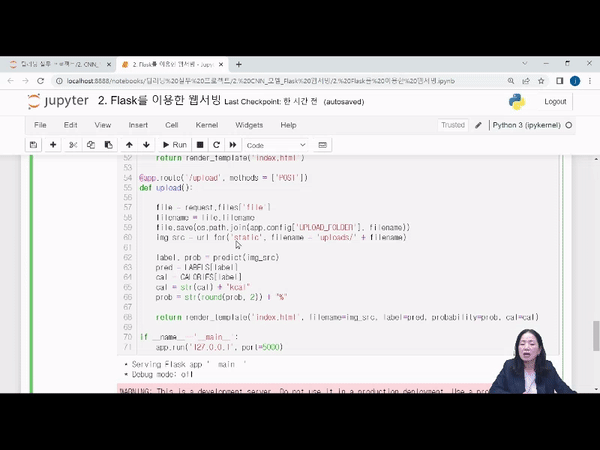 Building a website with a Flask server
Building a website with a Flask server Q. Is prior knowledge of Python programming required?
This course and subsequent deep learning courses at Maso Campus require basic Python skills.
For those unfamiliar with Python, we recommend taking Maso Campus' 'Introduction to Python Data Analysis' and 'Practical Python Data Analysis' courses first.
Q. Are there any requirements or conditions for taking the course?
Since this is a hands-on course, we recommend bringing a dual monitor or a spare device that allows you to separate the lecture and practice screens. Furthermore, since the practical training will be conducted on a Windows OS, we recommend taking the course in a Windows environment.
Q. I heard that deep learning requires a high-spec PC. Do I need a high-spec PC for practical training?
While it's recommended to run the course in a high-spec environment, this course will be conducted in a virtual environment utilizing Anaconda and Jupyter Notebook. Therefore, anyone with a standard work PC will be able to complete the course without difficulty.
📢 Please check before taking the class!
Who is this course right for?
Practitioners who want to try using image classification for their work
Anyone who wants to build a career in the IT industry, such as starting a business, changing jobs, or joining a company
Managers and practitioners who want to introduce artificial intelligence into their business
Anyone who wants to start by learning the core techniques of CNN to build deep learning capabilities.
Need to know before starting?
This course requires basic Python skills.
I recommend that you take Maso Campus' [Introduction to Python] and [Python Practice] courses first.
8,790
Learners
1,202
Reviews
108
Answers
4.7
Rating
95
Courses
"어제보다 성장하겠습니다. 그리고, 어제보다 성장하려는 사람을 돕겠습니다."
마소캠퍼스의 진심과 소망을 담은 Actionable Content로,
2013년부터 온오프라인으로 함께해 온 누적 강의 1억시간!
이 소중한 경험과 시간은 언제나 마소캠퍼스와 수강생 모두의 성장의 원천입니다.
마소캠퍼스 팀은 우리의 모두의 성장을 위해 두 가지 원칙을 반드시 지킵니다.
1. 배우면 반드시 쓸 수 있는 Actionable Content
2. 참여자의 시간과 수고를 존중하는 Time-Saving Curriculum
마소캠퍼스의 Actionable and Time-Saving Curriculum으로 성장의 길을 함께 걸어나가길 기원합니다.
All
23 lectures ∙ (2hr 37min)
Course Materials:
All
2 reviews
5.0
2 reviews
Reviews 3
∙
Average Rating 5.0
Reviews 3
∙
Average Rating 5.0
5
Thank you for leaving a review! 😊 It's rewarding to know my hard work paid off. Maso Campus will always do its best!
Limited time deal
$53.90
30%
$77.00
Check out other courses by the instructor!
Explore other courses in the same field!